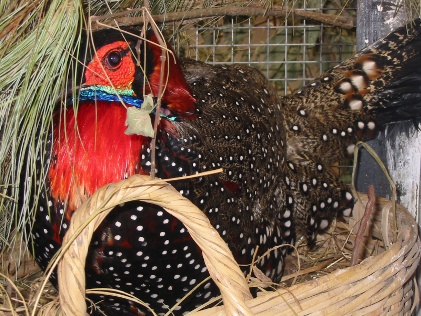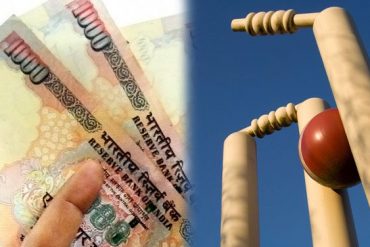Shimla: Wildlife officials in Himachal Pradesh are euphoric over the resumed breeding of a highly endangered pheasant species.
They say all the nine pairs of the western tragopan which were hit by a serious bacterial infection in 2010 have not only recuperated but have also multiplied after a gap of two years.
“Seven chicks have been born. They are now three weeks old and shaping up well,” said Principal Chief Conservator (Wildlife) RK Sood.
He said almost all the birds at the Saharan pheasantry, located 160 km from Shimla, have recovered from the infection.
They were hit by E. coli bacteria in May 2010, leading to the death of three.
Since then, there have been doubts about the future of the Central Zoo Authority-supported conservation breeding project at Saharan, the only breeding programme of pheasants in the country. The wildlife authorities were forced to abort their breeding for the time being.
Sood said a total of 40 eggs were laid by the birds in six clutches this season.
“From one clutch, three chicks hatched. The remaining four chicks produced from two clutches – two from each clutch. Their success in breeding indicated that the birds have fully recovered from the infection,” he added.
Officials said three females are still involved in brooding.
Unlike the past, the caretakers have not used broody hens to hatch eggs. “The eggs were hatched by natural mothers,” an official said.
He said for the first time the wildlife department has taken the help of the Wildlife Institute of India (WWI) to look after the health and diet needs of the birds.
“On the advice of the WWI, we have stopped ‘physiological technique’. The birds were allowed to breed under natural conditions,” the principal chief conservator said.
Last year the caretakers used the “physiological technique” to control the breeding process. They have shortened the daylight hours by covering the enclosures with tarpaulins from 4 p.m. to 9 a.m. every day. This helps in retarding further breeding.
The species normally breeds from May to July when the days are longer.
According to the wildlife officials, 22 chicks, except seven this year, have been born since 1993, when the first breeding in captivity took place in the world. So far five chicks have died natural deaths.
The western tragopan, which is also the state bird, is listed in the Red Data Book of the International Union for Conservation of Nature (IUCN), a compendium of species facing extinction.
The western tragopan belongs to the family Phasianidae, which also includes peafowl and red jungle fowl. It is the least studied bird in the world and therefore its population estimates are unavailable.
Himachal wildlife officials say they have regularly sighted the pheasant at the Great Himalayan National Park in the Kullu Valley.
Being a shy bird, it is rarely sighted and is found at an altitude of 2,000 to 3,600 metres in the temperate forests of Jammu and Kashmir, Himachal Pradesh and Uttarakhand.
The opinions, beliefs and viewpoints expressed by authors, news service providers on this page do not necessarily reflect the opinions, beliefs and viewpoints of Hill Post. Any views or opinions are not intended to malign any religion, ethnic group, club, organization, company, or individual.
Hill Post makes no representations as to the accuracy or completeness of any information on this site page.




Kudos to all wildelife staff!
Many enthusuasts would expect a follow up the story, with photoes, IUCN Red List status and if possible photes of the chics.
Photographs of the chicks & their mother can be procured from Wildlife people. Sarahan Pheasantry is the only place in the World to breed Western Tragopan in captivity by the parents themselves. Photograph by Francy Hermans is of artificially inseminated breeding.